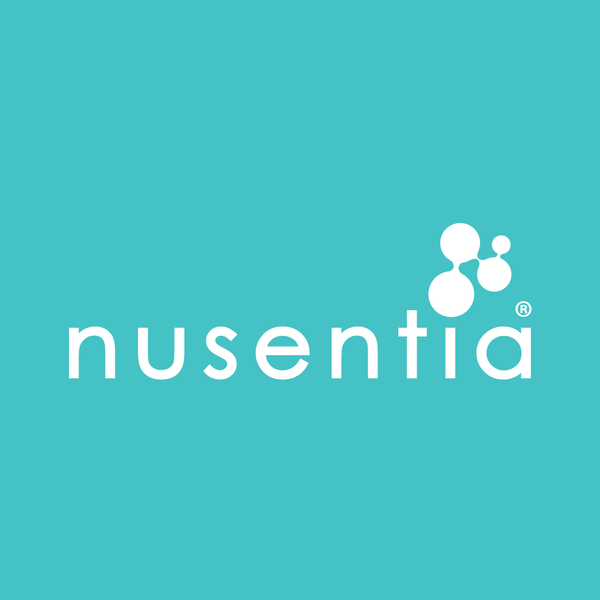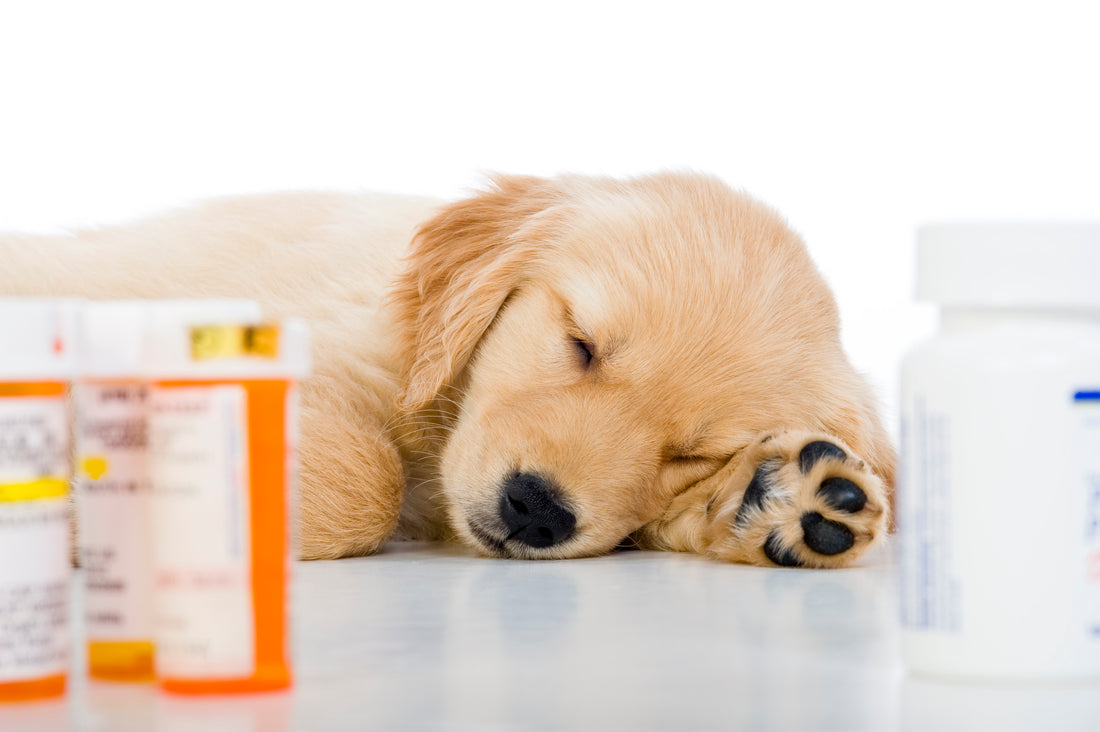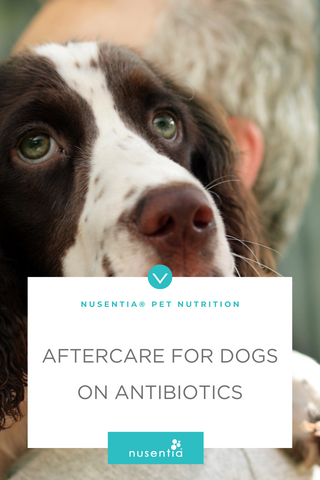The antibiotics rollercoaster... how can you avoid it for your dog? If your veterinarian has prescribed antibiotics it is probably with good reason. But when your pet is done with antibiotic therapy, what can you do to get your pet's health stable fast?
The short answer is, get your dog on probiotic therapy fast!
But first, it's important to understand the reason why your dog was put on antibiotics in the first place. If properly prescribed, antibiotics often are the best possible thing to use in an acute state (aka "emergency").
In contrast, antibiotics are not meant for chronic care. Understanding the difference between acute and chronic is important in knowing the next steps post-antibiotic therapy.
Read: Stop Diarrhea After Antibiotics
After antibiotics, probiotic therapy is very effective at getting dogs and puppies back in balance.
Differentiating Between Acute and Chronic
(The key to avoiding the antibiotics rollercoaster)
When one does not understand the difference between acute and chronic care, it can lead to a host of problems. We hear from pet owners daily that have been put on the antibiotics rollercoaster with their pet. In this scenario, the pet is treated, yet the symptoms come back again and again, and sometimes even worse than before.
When dogs are put on antibiotics for chronic issues, the issues come back again and again—and usually worse than before.
Acute Problems
In the acute state, it is critical to have a sense of urgency and understand risk versus reward. Antibiotics are made for acute, or urgent situations, such as a serious infection.
In contrast, if a change in diet could solve the issue, you would likely avoid antibiotics altogether.
Antibiotics are strong and designed to get rid of problems now. Thus, antibiotics are designed to treat acute situations.
Antibiotics are NOT designed to be taken for long periods of time, as in, a chronic situation, or for prevention. This has become a problem in human health where individuals may be on numerous medications, which cause numerous side effects. Thus, the medications do not address the root or long-term care of the individual.
Chronic Problems
For a chronic problem, a long-term approach is in order to address the root cause that started the issue. Antibiotics are inappropriate for chronic care. Lifestyle changes and supplementation are bested suited for chronic and preventative care.
ACUTE CARE vs. CHRONIC CARE
Acute problem = Use antibiotics
Chronic Problem = Administer lifestyle changes, probiotic supplementation, and preventative care.
Antibiotics vs. Probiotics
The word antibiotic actually means against life. Not hard to figure out then that a probiotic would then mean for life.
Antibiotics have specific purpose. They were developed to target pathogenic bacteria that originate in the gut. Antibiotics are very adept at destroying those harmful bacteria and eliminating the acute threat of the host (animal or human) being overrun.
The problem with antibiotic therapy is that it also destroys the body’s natural ability to stay healthy. Antibiotics destroy the overall microbiota’s normal balance. An imbalanced gut is the underlying cause for multiple health issues, including, yeast overgrowth and further infections.
In short, both good and bad bacteria are killed with antibiotics. But, your dog NEEDS the good bacteria for health.
A common scenario seen in pets as well humans is a relapse after antibiotics. Post antibiotic therapy, the animal suffers from diarrhea due to a pathogen known as C. dificile. This pathogen is able to grow without check because of all competing bacteria being wiped out.
In contrast, probiotics focus on supplying healthy bacteria so that the microbiota maintains its favorable balance. Pathogens are challenged to compete with so many “good guys” occupying the future. With a healthy balance, pathogens are kept in check, the gut flourishes and produces key substances that support overall gut function and immunity.
Probiotic Miracle® seeds your dog's digestive tract to help keep diarrhea from becoming a problem for your pet after antibiotics.
How To Maintain Intestinal Balance?
So, if your dog or cat is or has been on antibiotics, it is critical that you start them up immediately on a probiotic regimen. Not only will probiotics help to restore the potential imbalance brought about by the antibiotics, but it will likely get to the root problem that created the need for antibiotics in the first place.
This means getting off the antibiotics rollercoaster. Recall, these pathogens originate in the gut. With that in mind, supply healthy bacteria for the gut to compete and colonize the intestinal walls. Bad bacteria can’t take over when good bacteria is in charge.
Pathogens originate in the gut. Supplying the gut with probiotics is the key to keeping pathogens in check.
Are Probiotics Safe for Puppies?
Yes. In fact, the best way to eliminate or reduce the chances of having to use a prescribed antibiotic is to give a pinch of probiotics during this important developmental stage. This is a great way to support long-term health and good immune function.
Further, strong gut health is linked to fewer allergy symptoms and digestive problems later in life.*

Why Use Probiotic Miracle® After Antibiotic Therapy?
Probiotic Miracle® is an excellent choice as it is unique to other formulas. It was specifically designed to include strains of bacteria that were studied to benefit dog health.
Can I Give My Dog Probiotics During Antibiotics?
It's is a controversial issue, whether or not to give probiotics during antibiotics, and we suggest waiting.
Because the probiotics will be killed during antibiotic therapy, it would not be cost effective nor health-effective to supply probiotics during the time that antibiotics are being administered. For this reason, we recommend waiting until your pet has completed the antibiotics, then immediately administer probiotics, and lots of them.
Wait until your pet has completed the antibiotics, then immediately administer probiotics, and lots of them.
How Much Probiotics Does My Dog Need After Antibiotic Therapy?
After your dog has completed his antibiotics, it is suggested that you provide 3-4 times the regular suggested amount of Probiotic Miracle® for 3 weeks to help stabilize intestinal flora. After 3 weeks, continue at the normal dosage per your pet's weight. In doing this, you will reduce the risk of diarrhea, pathogenic bacteria and yeast overgrowth that may occur following antibiotics.
Related: Understanding Probiotics for Pets: CFU, Species, and Dosage ExplainedCites and References
Stokes JE, Price JM, Whittemore JC. J Vet Intern Med. 2017 Sep; 31(5):1406-1413. Epub 2017 Jul 29. Randomized, controlled, crossover trial of prevention of antibiotic‐induced gastrointestinal signs using a synbiotic mixture in healthy research dogs.
The Truth About Probiotics for Dogs: Antibiotics and Dogs. Published September 2009.
Berry AS, Kelly BJ, Barnhart D, Kelly DJ, Beiting DP, Baldassano RN, Redding LE. PLoS ONE. 2019 Aug 30; 14(8): e0215497. Gut microbiota features associated with Clostridioides difficile colonization in puppies.
PLoS One. 2018; 13(3): e0193507.Published online 2018 Mar 23. doi: 10.1371/journal.pone.0193507. Disentangling factors that shape the gut microbiota in German Shepherd dogs.
Probiotics for Puppies. http://probioticsfordogs.com/probiotics-puppies.html





